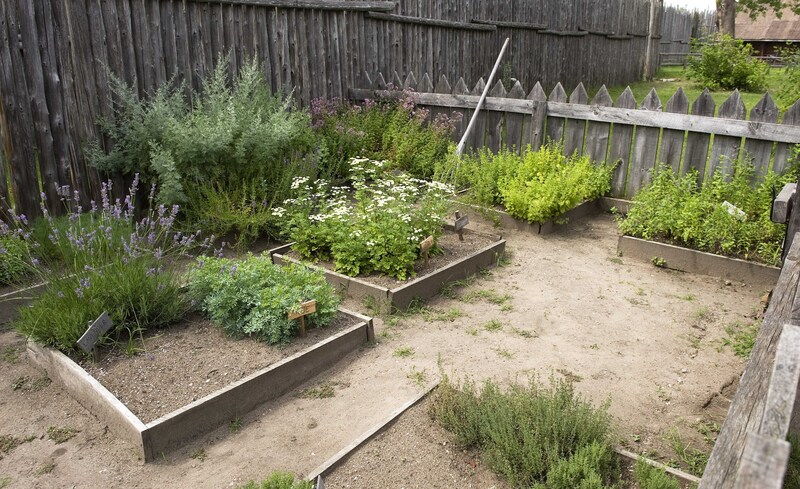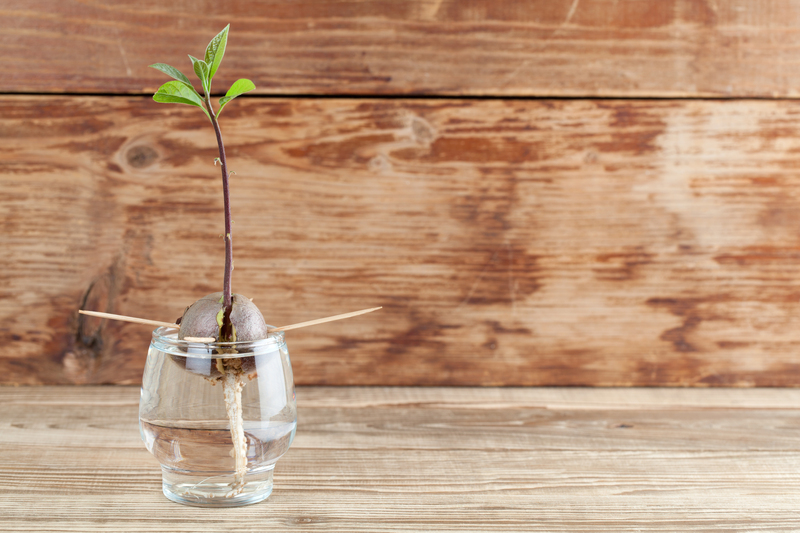9 Key Gardening Tips to Kickstart Your Green Journey
Posted on 08/09/2025
9 Key Gardening Tips to Kickstart Your Green Journey
Are you ready to embrace the joys of nature and start your own thriving garden? Whether you are a complete beginner or looking to brush up on your green skills, embarking on your gardening adventure is both exciting and rewarding. Cultivating plants not only beautifies your space but also brings immense satisfaction, improves well-being, and can yield fresh, homegrown produce. In this comprehensive guide, we share 9 key gardening tips to kickstart your green journey, setting you up for a fruitful--and enjoyable--experience. Explore different gardening techniques, learn essential skills, and grow your passion for plants with our easy-to-follow advice.
Why Gardening is a Rewarding Journey
Before diving into our essential gardening tips for beginners, it's worth highlighting the remarkable benefits of gardening. Regular exposure to greenery and soil can reduce stress, boost your mood, and foster a sense of accomplishment. Moreover, growing your own vegetables or herbs can lead to a healthier, more sustainable lifestyle, and save you money in the long run. Simply put, starting a garden is a life-enhancing venture.
1. Start Small and Smart: Choose the Right Space
The first step in your gardening journey is selecting a suitable spot. Don't feel pressured to grow a large garden from the start. A small, manageable area allows you to focus, experiment, and learn without feeling overwhelmed.
- Observe how much sunlight different areas receive throughout the day.
- Consider accessibility--make sure your garden is easy to water and maintain.
- Check the proximity to your home. Having your garden nearby encourages regular care.
Tip: For limited spaces, consider container gardening on patios or balconies. Even window sills can be turned into mini herb gardens!

2. Know Your Climate and Soil
To achieve a thriving, vibrant garden, it's vital to understand your local environment. Plants have unique needs, and selecting ones suited to your region is key.
- Climate Zones: Research your hardiness zone and choose plants that flourish in your local temperature and humidity.
- Soil Quality: Analyze your soil's texture and pH. Sandy, clay, silt, or loamy soils all have distinct characteristics. Simple home test kits are widely available.
- Soil Improvement: Add compost or organic matter to enhance fertility and structure, especially if your soil is heavy, compacted, or lacking nutrients.
_Adapting your garden to your soil and climate not only boosts your success rate but also promotes sustainable practices._
3. Pick the Right Plants for Beginners
When starting your green journey, it's wise to select easy-to-grow plants that offer reliable results. Focus on varieties that match your garden conditions and require minimal upkeep.
- Herbs: Basil, mint, parsley, and chives are excellent choices for first-time gardeners.
- Vegetables: Lettuce, radishes, cherry tomatoes, and zucchini grow quickly and provide early rewards.
- Flowers: Marigolds, pansies, sunflowers, and nasturtiums are resilient and brighten your garden.
Tip: Read seed packets or plant labels carefully for information about sunlight, spacing, and watering needs.
4. Master the Basics of Watering
Proper watering is the backbone of any successful gardening adventure. Overwatering and underwatering are common pitfalls. Understanding your plants' needs helps them flourish.
- Water early in the morning or late in the afternoon to minimize evaporation.
- Check soil moisture by inserting your finger about an inch deep--water only when it feels dry.
- Use a watering can with a fine rose or a gentle hose spray to avoid washing away soil or damaging seedlings.
_Pro tip: Mulch your soil to help retain moisture, reduce weeds, and keep roots cool._
5. Feed Your Plants with Nutrients
Fertile soil is essential for robust plant growth. While nature provides some nutrients, supplementing your soil gives your plants a significant boost, particularly in small or container gardens.
- Use organic compost, well-rotted manure, or commercial fertilizers according to label instructions.
- Apply slow-release fertilizers at planting time and liquid feeds during key growth periods.
- Avoid over-fertilizing, which can harm roots and pollute waterways.
Tip: Listen to your plants--yellowing, stunted growth, or poor flowering can be signs of nutrient deficiencies.
6. Protect Against Pests and Diseases
One of the keys to a flourishing garden is actively preventing and managing garden pests and diseases. Taking proactive steps ensures your plants remain healthy and productive.
- Inspect your plants regularly for signs of trouble, such as holes in leaves, discolored spots, or stunted growth.
- Encourage natural predators like ladybugs and birds to control insect pests.
- Practice crop rotation and proper spacing to minimize disease risks.
- Remove weakest plants and dispose of diseased material away from your garden.
_Tip: Use organic pest control options such as neem oil, insecticidal soap, or homemade sprays to tackle common pests safely._
7. Embrace Seasonal Gardening Routines
Gardening is a dynamic process that changes with the seasons. Understanding when to plant, prune, and harvest is fundamental for ongoing success, especially for those new to gardening.
- Spring and Early Summer: Sow seeds, transplant young plants, and start regular weeding and feeding.
- Summer: Monitor watering, support taller plants, and enjoy harvesting fast-maturing crops.
- Autumn: Collect seeds, clear spent plants, and add compost to your beds for winter enrichment.
- Winter: Plan next season's garden, repair tools, and start seedlings indoors if possible.
<_strong>Did you know? Keeping a gardening diary helps track what works and what needs improvement for the next year._
8. Prune and Harvest Regularly
Both pruning and harvesting are crucial for healthy growth and productivity. By carefully removing spent flowers, dead or diseased branches, and ripe fruit or vegetables, you invigorate your plants and prevent overcrowding.
- Deadhead flowering plants to encourage more blooms.
- Pinch back herbs to promote bushier growth.
- Harvest vegetables and fruits when ripe to prevent splitting or pest problems.
Tip: Always use sharp, clean tools to make precise cuts and minimize harm to your plants.
9. Keep Growing: Learn, Share, and Enjoy
The most important gardening tip is to keep learning and enjoy the process. No garden is ever perfect, and mistakes are part of your green journey.
- Connect with local gardening clubs, online forums, and neighbors to share experiences and tips.
- Experiment with new plants, designs, and eco-friendly practices to broaden your skills.
- Take time to sit back, savor the beauty and tranquility of your green space, and celebrate every success, big or small.
_Your adventure in gardening is a lifelong pursuit--there's always something new to discover!_
Gardening Tools: Essential Equipment for Beginners
Starting your own garden journey is easier with the right tools at hand. Invest in basic equipment to make planting, weeding, and maintaining your garden a breeze.
- Trowel and hand fork: For digging, planting, and loosening soil.
- Pruning shears: For trimming plants and harvesting herbs or vegetables.
- Watering can or hose: Choose a gentle spray option.
- Gloves: Protect your hands from thorns, dirt, and blisters.
- Rake: For gathering leaves and smoothing the soil surface.
_Simple, quality tools enhance your gardening experience, making tasks efficient and enjoyable._

FAQs: Common Questions for New Gardeners
How often should I water my garden?
Answer: Watering depends on plant type, soil, and weather. As a rule of thumb, most gardens need about 1 inch of water per week. Always check soil moisture before adding more water.
Which vegetables are best for beginners?
Answer: Leafy greens (lettuce, spinach), radishes, beans, and cherry tomatoes are ideal choices due to their rapid growth and forgiving nature.
How can I prevent weeds naturally?
Answer: Apply mulch to suppress weeds, plant densely to shade out competitors, and pull weeds by hand before they go to seed.
When should I start planting in my area?
Answer: Check your local frost dates or consult garden centers for the best planting windows in your region's growing zone.
Conclusion: Cultivate Your Green Passion!
Embarking on your gardening journey might seem daunting at first, but armed with these 9 key gardening tips, you'll be nurturing lush plants and enjoying nature's bounty in no time. Remember, starting small, choosing the right plants, caring for your soil, and learning along the way are the foundations of gardening success. Every seed you plant is a chance to grow your skills, improve your environment, and feed your soul.
Begin your green journey today--one step, one seed, one garden at a time!

